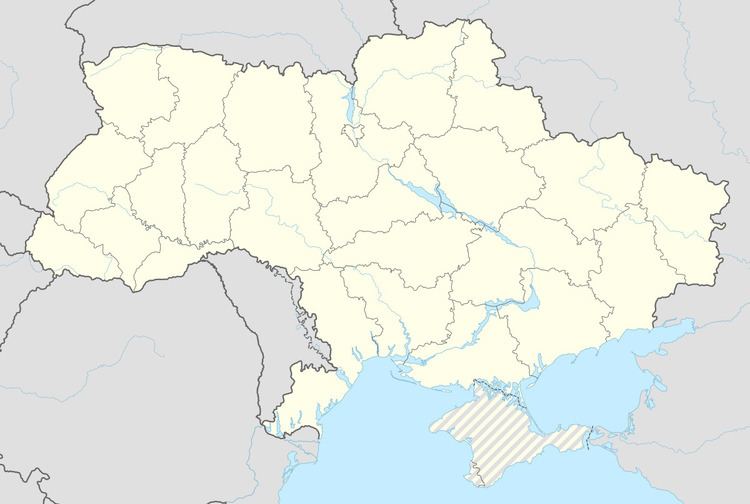Country Ukraine Founded 1410 Zip Code 22133 Local time Saturday 10:47 PM Province Vinnytsia Oblast | Raion Koziatyn Raion Elevation 225 m (738 ft) Area 5.15 km² Population 3,467 (2001) | |
 | ||
Weather 3°C, Wind E at 10 km/h, 91% Humidity | ||
Makhnivka koziatyn raion
Makhnivka (Komsomolske) (Yiddish: מאכניווקא Makhnivka; Ukrainian: Махнівка Russian: Комсомольское (Махновка)) is a village in the Koziatyn Raion of the Vinnytsia Oblast, Ukraine, located on the west bank of the Gnylopiat River. The town is near a wide spot in the river, where several small streams feed into it from both sides.
Contents
Map of Komsomol's'ke, Vinnytsia Oblast, Ukraine
Makhnivka is in western Ukraine, 21 kilometres (13 mi) south-southeast of Berdychiv and 154 km (96 mi) southwest of Kyiv.
Name
The name of the town was changed entirely in 1935 to Komsomol's'ke (or Komsomolskoye), which was a very common town name during the Soviet era (meaning something like "young communist league town"). In 2001, the village council elected to return the town to its historic name of Makhnivka.
History
The region of western Ukraine was part of the Crown lands of Poland. The first mention of Jews in Makhnivka came in 1648, in an account from the Cossack-Polish War (1648–57), when Chmielnicki's Cossacks attacked the local fortress and murdered a number of Poles and Jews. Over 100 years later, in 1765, six Jews are recorded in Makhnivka.
Upon the Partition of Poland (c. 1793), territories including western Ukraine were annexed into the Russian Empire. Orthodox Tsarist Russia, which was intolerant of Jews, suddenly acquired a significant Jewish population in the territories annexed from Catholic Poland. As a result, the Pale of Settlement was created, generally restricting Jews to living in the new territories, but not in "Russia proper". Jews during this period had a generally harder time, at best being isolated, and at worst being visited with pogroms. In the census of 1897, the village of Makhnivka had 2,435 Jews out of a total population of 5,343 (about 45%).
On an 1845 Russian map, "Machnowka" was the chief city of the Machnowka uyezd in Kiev guberniya, while "Berdyczow" was just a small town in Zhitomir uyezd of Volhynia guberniya. When the railroads were developed (some time after 1860), the railroad went through Berdychiv and Koziatyn (11 km (7 mi) east of Makhnivka), but bypassed Makhnivka. This caused Makhnivka to decline, while both Berdychiv and Koziatyn grew. Sometime around the turn of the century, Berdychiv was separated from Volhynia guberniya and joined to Kiev guberniya, replacing Makhnivka as the chief city of the uyezd (which was renamed from the Machnowka uyezd to the Berdychev uyezd).
By the outbreak of World War II in 1939, the Jewish population of Makhnivka had dwindled to 843. The Germans captured the town on 14 July 1941 and on 9 Sept. executed 835 Jews in the Zhezhelevsk forest 5 km (3 mi) from Komsomolske.
A Hasidic dynasty was established in Makhnivka in the early 20th century. It continues to flourish in Israel.
